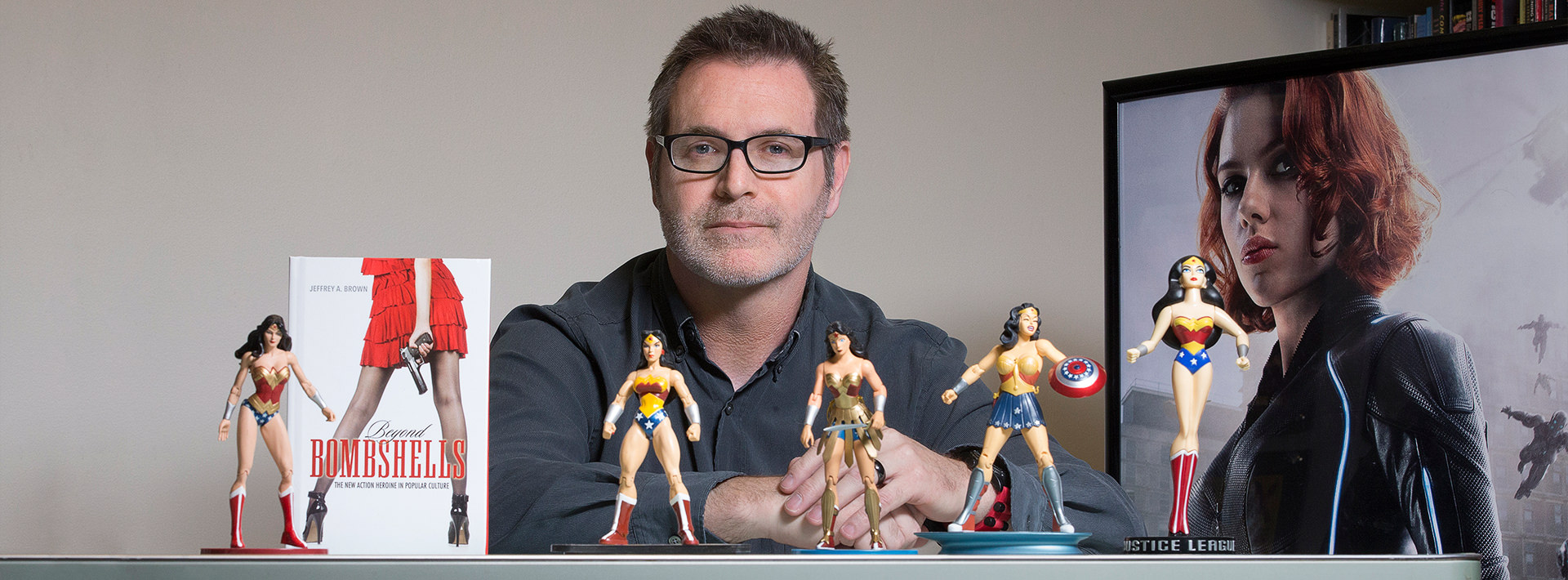Beyond Bombshells
Modern day action heroines reflect changing cultural attitudes

By Julie Carle
The modern day action heroine is being redefined in movies, comic books, television and literature says a BGSU popular culture faculty member.
In his new book “Beyond Bombshells: The New Action Heroine In Popular Culture,” Dr. Jeffrey A. Brown looks at action heroines and addresses the shift in how female characters are portrayed in popular culture today.
“Beyond Bombshells” is Brown’s second book that focuses on the action heroines; his first was “Dangerous Curves,” published in 2011 by the same publisher, University Press of Mississippi.
“Today’s action heroines reflect changing cultural attitudes,” Brown said. Bombshells of the past were best known for their sexuality. Beauty was their weapon and their “powers” over men were stereotypically erotic.
Brown, who has studied action genres for decades, said “these genres have changed over time.” Progression during the 1960s and ’70s went from female characters who were girlfriends and damsels in distress to detectives who were smart but “still eye candy,” Brown said. In the 1980s, female action characters, such as Sigourney Weaver in “Aliens,” were masculinized, with more muscular and body builder-type bodies.
In recent years action heroines have further evolved. They continue to be beautiful and sexy, but they are also lethal. Instead of disarming men with their beauty, they are able to foil their counterparts with strength, intelligence and power, Brown explained. The new era includes such popular characters as Katniss Everdeen from “The Hunger Games” and Lisabeth Salander of “The Girl with the Dragon Tattoo.”
Brown, who is a professor of popular culture, is fascinated with the changing perspectives of women in the action genre. The sexuality of today’s female superheroes is a recurring theme for his research, in particular how objectification intersects with racial stereotyping, romantic fantasies, images of violent adolescent and preadolescence girls and the neoliberal feminist revolutionary stories.
According to Brown, Hollywood has historically catered to men who were the primary audience for action films. The sexy females in the films kept the interest of the men, while the male leads were the heroes.
The new role model of action heroines is resonating with younger women, broadening the audience base for the action genre. The popularity demonstrates the shifting ideas about strong women, and the expanded audience is proving to have economic endurance, as evidenced by box office hits such as “The Hunger Games” and additions of “Supergirl” to network television.
“The figure of action heroine has proven an especially interesting character because she occupies a position so closely aligned with cultural conceptions of ideal masculinity,” the book’s forward states. “The modern action heroine can fight, shoot, solve mysteries and save the world as well as Rambo, James Bond or Indiana Jones ever did.”
Brown said women in action roles continue to be objectified and sexualized, but they are having some successes at challenging preconceived ideas about gender-appropriate behavior. Additionally, this revolution has created considerable debate and scholarly research about the gendered and cultural significance of action heroines.
The book offers a scholarly look at the action heroine, and thus, is considered more of a textbook rather than an action genre book. However, he finds the topic fascinating and a significant marker that reflects the changing cultural attitudes. “Things are shifting. Our action heroes are strong, powerful and beautiful people, but they are better rounded,” he said, further explaining that “Katniss feels badly when she kills people.”
Women are assuming lead roles in action narratives on a fairly regular basis, Brown said, which is a positive for women, a fact which is important to Brown, who is the father of a young daughter. “The action heroine is steadily becoming a viable role for women.”
Updated: 02/24/2020 09:54AM
